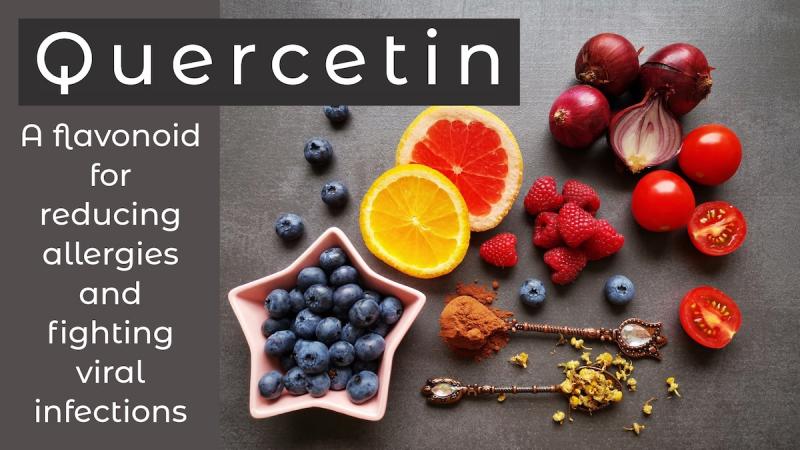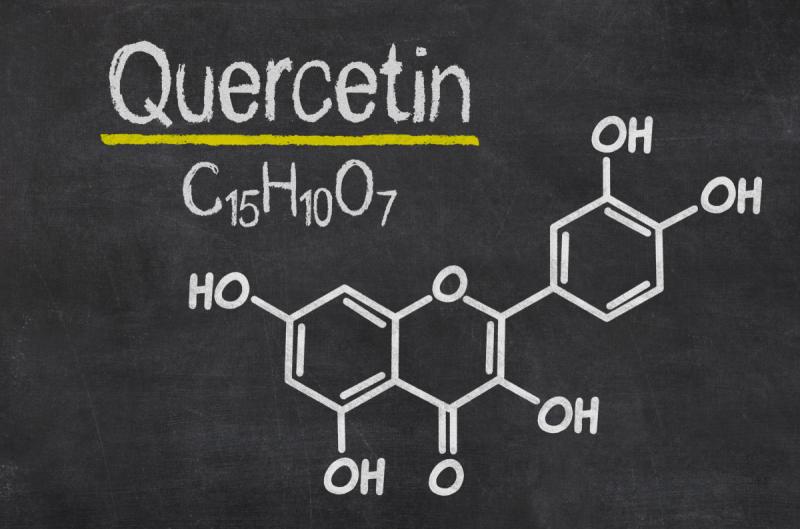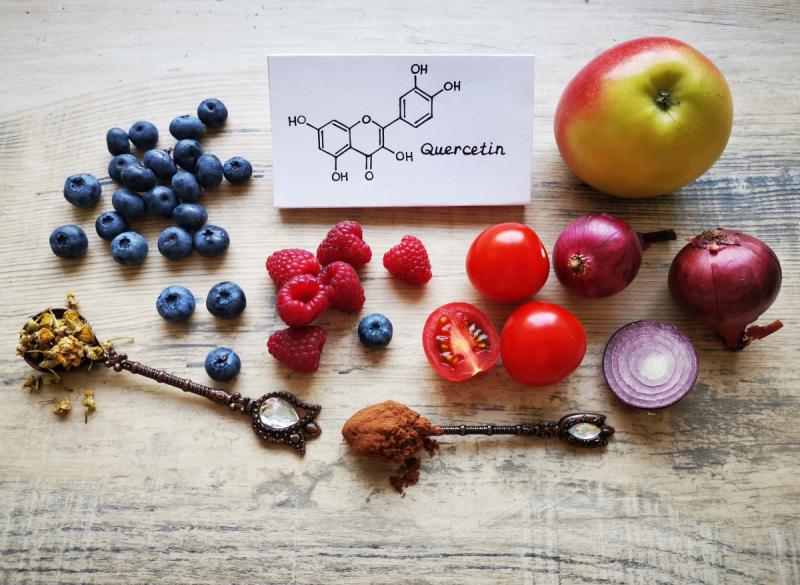
Fats, proteins, carbohydrates, vitamins, and minerals are the most well-known categories of nutrients. But there are many other important phytochemicals in foods and herbs. One group of phytochemicals known as flavonoids were originally called vitamin P due to their ability to prevent tiny blood vessels and capillaries from becoming too permeable. While flavonoids didn't make it to vitamin status, they are still important for maintaining good health.
Flavonoids work with vitamin C to prevent free radical damage. They keep vitamin C active for a longer time. They also stimulate the production of collagen and help keep capillaries healthy.
There is one very important flavonoid found in fruits and vegetables with a high vitamin C content that I want to focus on. It’s called quercetin. Besides working with vitamin C to reduce oxidative stress and inflammation, quercetin has a some important benefits for the immune system, specifically allergies and viral infections.
Quercetin and Allergies
 As I write this article, it’s the first of April and various trees are starting to bud and bloom, releasing pollen into the air. For many people, it’s a wonderful time of the year, but for others, spring is a miserable season due to the allergic reactions they get from pollen.
As I write this article, it’s the first of April and various trees are starting to bud and bloom, releasing pollen into the air. For many people, it’s a wonderful time of the year, but for others, spring is a miserable season due to the allergic reactions they get from pollen.
Quercetin may help with these spring-time allergies. Allergic reactions involve an over-sensitivity of certain immune cells called mast cells. These cells release the histamine associated with allergic reactions. Quercetin, along with vitamin C, helps make mast cells more stable, reducing the release of histamine and calming allergic reactions.
So, if you suffer from seasonal allergies I would try taking about 500 mg of quercetin twice daily along with about 1,000 or 2,000 mg of vitamin C with bioflavonoids. If you're suffering from allergic reactions take 500 mg of quercetin and 1,000 mg of vitamin C every hour for three or four hours to reduce symptoms. It also helps to drink extra amounts of water along with a little bit of natural salt (e.g. Real Salt, Celtic Salt, Pink Himalayan). This increases mucus and tear production which helps flush pollen and irritants from the sinuses and eyes. I’ve also had good results giving people a formula of equal parts stinging nettle leaf, eyebright, and goldenrod.
Quercetin and Viral Infections
 Another valuable property of quercetin is its ability to help fight viral infections. Quercetin is a zinc ionophore. An ionophore is an agent that helps cells absorb minerals, so quercetin helps move zinc across cell membranes. Zinc helps inhibit viral replication and quercetin makes it more effective by moving it into the cell where it can do its job.
Another valuable property of quercetin is its ability to help fight viral infections. Quercetin is a zinc ionophore. An ionophore is an agent that helps cells absorb minerals, so quercetin helps move zinc across cell membranes. Zinc helps inhibit viral replication and quercetin makes it more effective by moving it into the cell where it can do its job.
So, if you’re fighting a viral infection you can take quercetin with zinc and vitamin C to help your immune system do its job. It also helps to add vitamin D3.
As an aside, another zinc ionophore is epigallocatechin gallate (EGCG), which also acts as an antioxidant and anti-inflammatory. It’s found in green tea and many fruits. The alkaloid quinine, which comes from Chinchona officinalis, and is found in tonic water, also acts as a zinc ionophore, as do the drugs derived from it, chloroquine and hydroxychloroquine.
Using Quercetin
Many foods contain quercetin. Raw onions are a great source and also contain EGCG and vitamin C. So raw onions can help with respiratory congestion due to allergies and with fighting viral infections. Other foods high in quercetin include apples, blueberries, kale, cherry tomatoes, and broccoli, all of which are powerful medicinal foods.
One of the herbs high in quercetin is elderberry, which is also known for reducing allergic reactions and helping to fight viral infections. Other herbs high in quercetin include dill, cilantro, fennel, and juniper berries.
You can take quercetin as a supplement, too. A good dose is 1,000 to 2,000 mg a day divided into two doses. Take it with vitamin C for allergies and zinc for infections. Quercetin is more easily absorbed if you take it with proteolytic enzymes like bromalin (from pineapple) or papain (from papaya).
In addition to the anti-allergenic and anti-viral properties of quercetin, it may also benefit heart and capillary health and increase energy. It may also be helpful for prostate and skin health.
Steven's Articles
-

-
The Health Benefits and Problems with Coffee
This popular caffeinated beverage can be beneficial…
October
-

-
Understanding Caffeine & Cellular Adaptation
Preserving the power of caffeine's buzz and the…
September
-

-
Horseradish
A pungent spice for aiding protein metabolism…
-

-
Banaba or Crepe Myrtle
A beautiful tree from Southeast Asia whose leaves…
August
-

-
Monkeyflowers
Flower essences to help see ourselves more clearly…
-

-
Mariposa Lilies
Strengthening the bond between mother and child…
-

-
The Noble Bay Leaf
A common kitchen herb for aiding digestion and…
-

-
Epimedium: Horny Goat Weed
A circulatory stimulant and kidney yang tonic…
July
-

-
The Medicinal and Nutritional Benefits of Apricots
A nutritious fruit and valuable medicinal seed for coughs
-

-
Dogwoods
Asian dogwood is used to stop excessive discharge,…
June
-

-
Neem: The Village Pharmacy
A popular Ayurvedic remedy for dental and immune…
-

-
Spilanthes: The Toothache Plant
A traditional remedy for teeth and gums, as well…
-

-
Forsythia
An anti-inflammatory, fever-reducing, and infection fighting herb
May
-

-
Buckwheat (Kashi)
A delicious, high protein, gluten-free, gut-healthy food
-

-
Leaky Gut Syndrome
Plugging the leaks on the underlying cause of…

